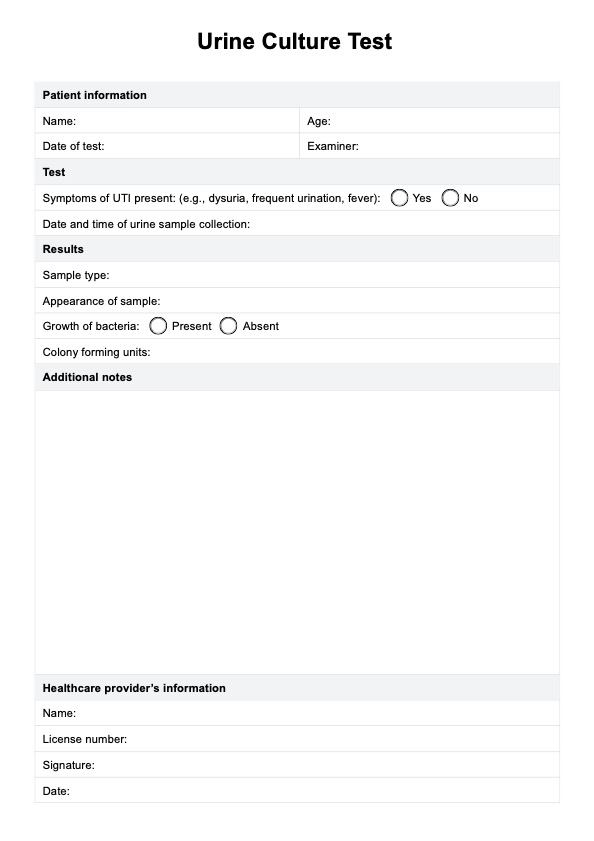Healthcare providers, such as doctors or nurse practitioners, typically request a Urine Culture Test to diagnose or rule out urinary tract infections. It’s commonly ordered when patients show symptoms like pain during urination or frequent urination.

Urine Culture
Learn all about Urine Culture Tests, including the procedure and interpretation of results. Download a free PDF guide for further information.
Use Template
Urine Culture Template
Commonly asked questions
Urine Culture Tests are used to detect infections in the urinary system, such as a UTI, kidney infection, or bladder infection. They are also used to monitor treatment effectiveness for ongoing infections.
A Urine Culture Test usually yields results in 24 to 48 hours, as the urine sample needs time for bacteria or yeast to grow in a lab setting. If more extensive testing is needed, results may take up to 3 days.
EHR and practice management software
Get started for free
*No credit card required
Free
$0/usd
Unlimited clients
Telehealth
1GB of storage
Client portal text
Automated billing and online payments











